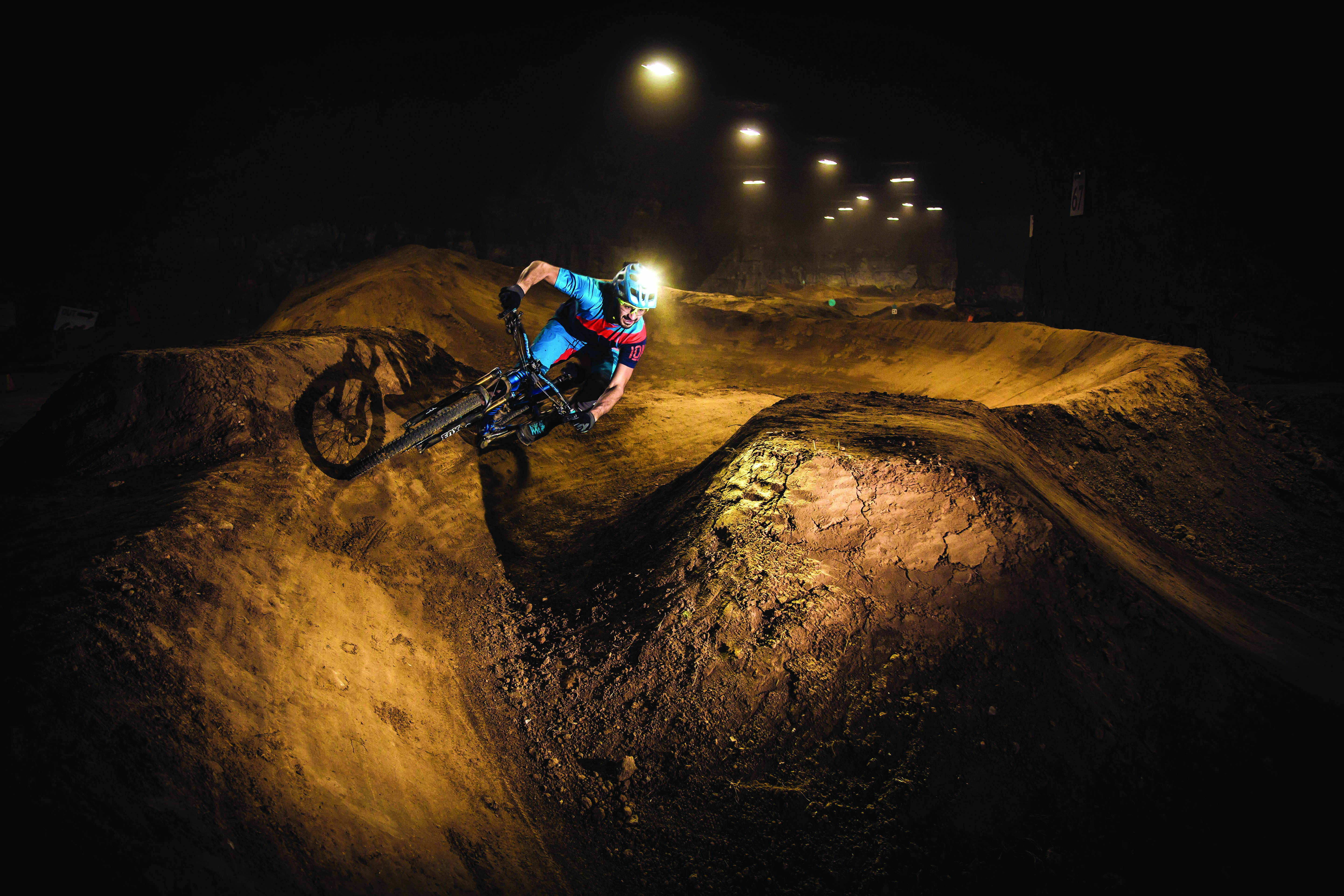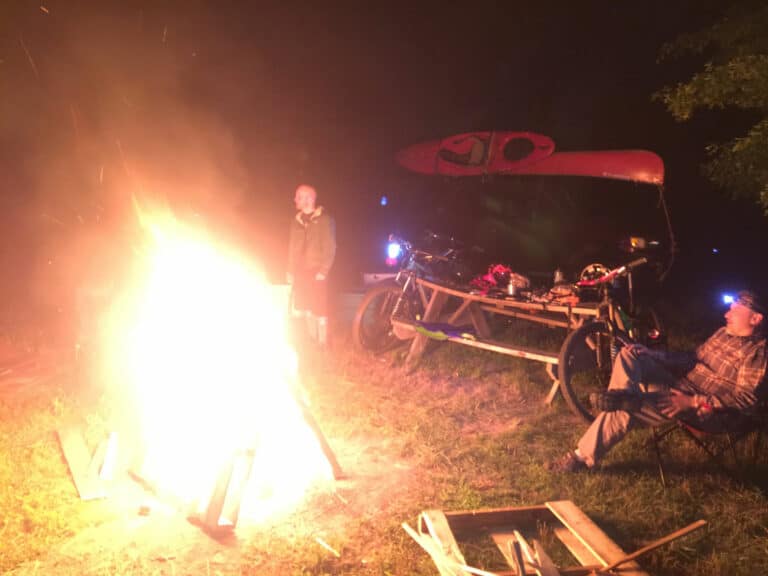On the surface, an interstate, a zoo, and a strip mall give little indication of the mountain bikers 10 stories below. Lurking below the city of Louisville is Mega Underground Bike Park—with more than 320,000 square feet of trails, jump lines, and pump tracks—all cooled with earth’s natural air conditioning to a pleasant 58 degrees.
Mega Underground Bike Park is built in an abandoned quarry. It originated in the 1930s as a source for road construction material, and the federal government commissioned it during the Cold War for use as a 50,000-person fallout shelter. After the quarry closed in the 1970s, it sat abandoned until a pair of developers bought the property in 1989 and began building a massive commercial storage facility and business park for high-security clients. As public interest in the site grew, they launched tram tours, then a zipline course, and then a ropes course. In January 2015, the bike park opened, giving eager riders a year-round place to drop in.
The cavern originally stretched 100 feet from floor to ceiling, but local construction crews have dumped their excess dirt and rock here for years, which allowed the owners to raise much of the cavern’s floor to within 30 feet of the ceiling. Conveniently, it also gave Prisel unlimited building material for his vision. With nearly eight acres of room to play and clients who trusted him with the blank slate of space, he and one employee began building their lines. They also turned to local mountain bikers for guidance in designing the space.
“Who better to do that than those people who live in that scene?” says Joe Prisel, whose company constructed the park. “It was almost like our build was roughed in and then polished a little bit, but left so others could build anything they wanted.”
A one-mile cross-country trail follows the perimeter of the bike park, passing jumps and flowy lines ranked according to difficulty. Gigantic limestone pillars left in place by the original excavators dot the landscape, and one-way signs guide riders on how to navigate the maze. Fluorescent lights overhead and natural humidity create a hazy atmosphere, but the constantly cool temperatures make the park a viable year-round riding location, regardless of the weather outside.
Prisel included features like a shipping container (with trails both through and across the top) and a teeter-totter in his design, but the impressive dirt jump lines take center stage. Advanced riders line up to fly over hill after hill, but those less confident in their airborne skills can still find plenty of intriguing elements to keep them busy.
A day pass to the bike park costs $24, and a bike rental with helmet runs $20. The park can easily accommodate 300 riders at once, but management limits capacity to 125 individuals at a time, which still gives each rider plenty of room to maneuver.
Thirteen-year-old Cade Packnett and his dad, Scott, visited the bike park last August from their home in Arkansas, where Cade has been hitting jumps since he was eight. When asked how the cavern stacked up against his trails at home, he enthusiastically replied, “This is nothing like anything I’ve seen before.” His dad was equally giddy. “This is awesome,” he added.








